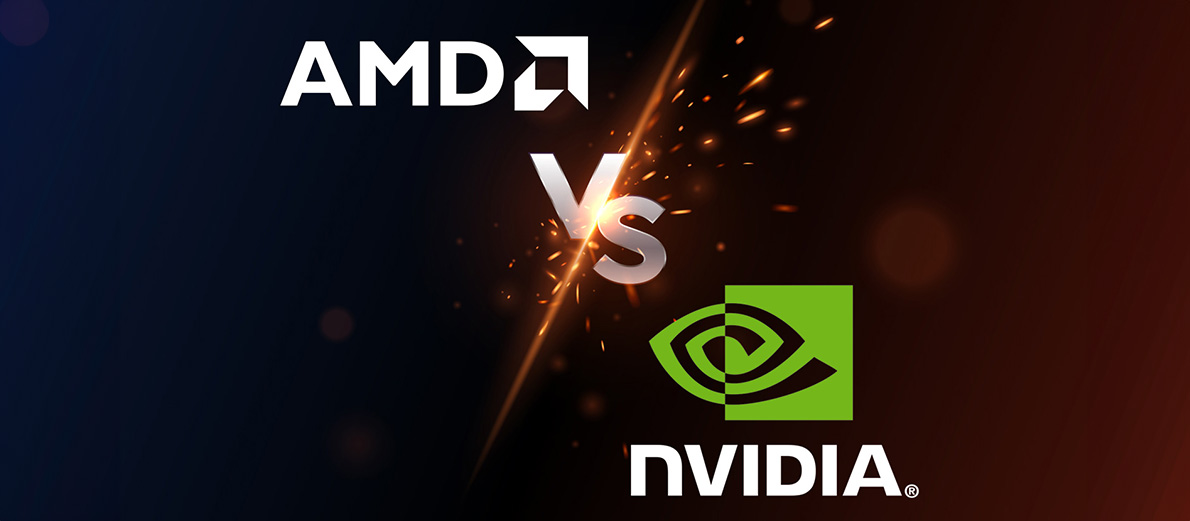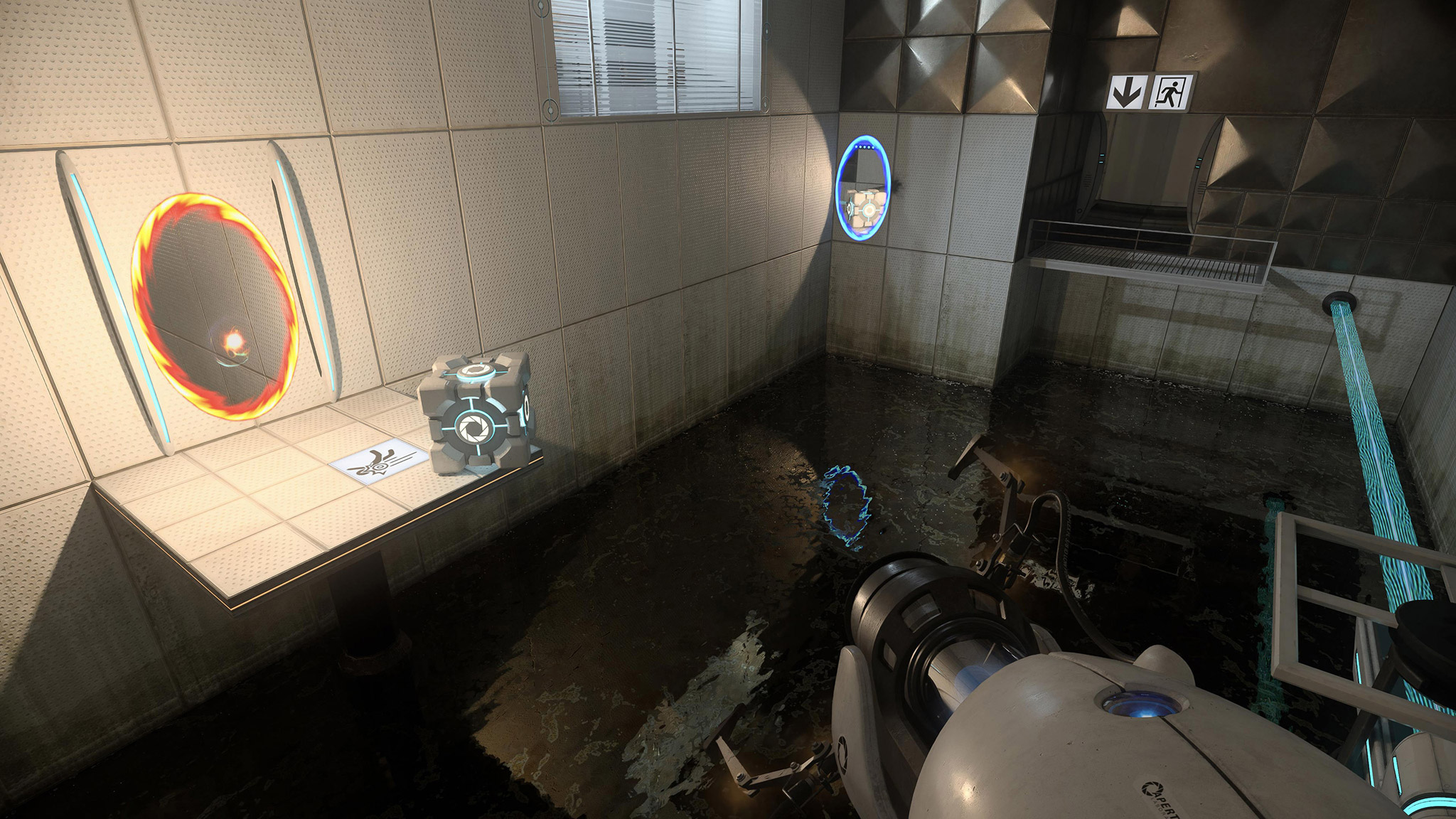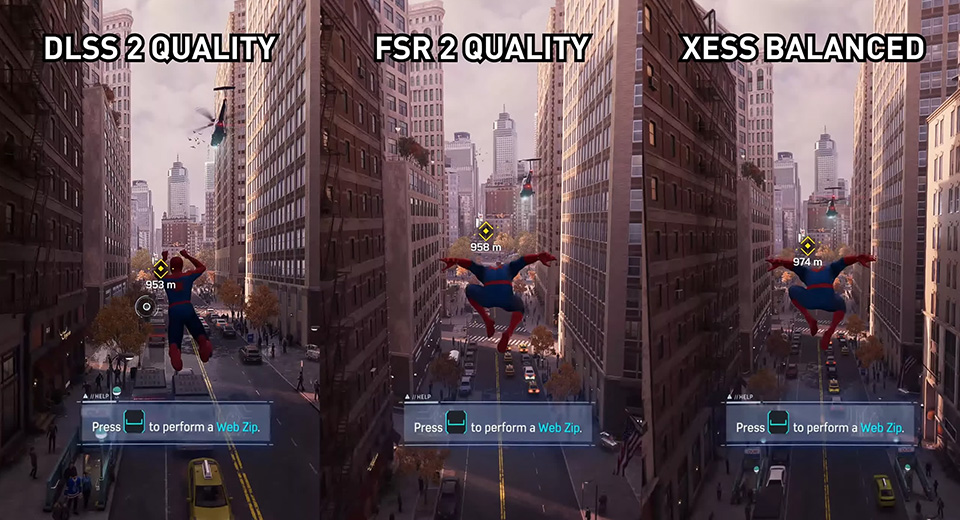- Which is more performance in games
- Which is cheaper
- Technologies
- Workstation tasks
- Conclusion HYPERPC

Debates on which graphics cards are better, NVIDIA or AMD, continue to this day. To answer this question, we decided to evaluate the graphics accelerators by:
- power in games;
- cost in stores;
- availability of unique technologies;
- performance in work tasks;
- quality of drivers and software.
We will analyze graphics cards by these criteria and answer in detail the question of which is better, NVIDIA GeForce or AMD Radeon.
Which is more performance in games
Before answering this question, it's important to remember that NVIDIA and AMD collaborate with game developers. They sponsor them, gift equipment, and share unique technologies. Therefore, some video games perform better on cards from a specific manufacturer.
For example, Ubisoft developers, known for the Far Cry and Assassin’s Creed series, have been collaborating with AMD for many years. Their games perform better on the "red" company's cards and show higher FPS. CD Projekt RED developers, known for The Witcher and Cyberpunk 2077 series, have been collaborating with NVIDIA for over 10 years. Their projects perform better on the "green" company's cards, especially when ray tracing is enabled.
For a fair comparison, we will take video games from developers who have not collaborated with any graphics card manufacturer. We have selected the following modern projects:
- God of War;
- Hogwarts Legacy;
- The Last of Us Part I;
- Resident Evil 4 Remake;
- Red Dead Redemption 2.
First, we will compare the average FPS of mid-budget graphics cards AMD Radeon RX 7600 and NVIDIA GeForce RTX 4060. All tests will be conducted with identical graphics settings in Full HD resolution. The results will be presented in the table below.
| AMD Radeon RX 7600 | NVIDIA GeForce RTX 4060 | |
|---|---|---|
| God of War | 80 | 69 |
| Hogwarts Legacy | 70 | 68 |
| The Last of Us Part I | 61 | 66 |
| Resident Evil 4 Remake | 80 | 92 |
| Red Dead Redemption 2 | 77 | 79 |
As can be seen from the results, there is no clear winner among the graphics cards.
Next, we will compare the accelerators AMD Radeon RX 7800 XT and NVIDIA GeForce RTX 4070. All tests will be conducted in Quad HD (2K) resolution with identical graphics settings. For clarity, all results will be entered into the table.
| AMD Radeon RX 7800 XT | NVIDIA GeForce RTX 4070 | |
|---|---|---|
| God of War | 106 | 90 |
| Hogwarts Legacy | 102 | 78 |
| The Last of Us Part I | 77 | 72 |
| Resident Evil 4 Remake | 103 | 97 |
| Red Dead Redemption 2 | 83 | 81 |
Now the leader is clear – it is AMD Radeon RX 7800 XT.
Based on the test results, it is clear that AMD graphics cards are either at the same level as NVIDIA or surpass competitors in performance.
Also, do not forget that the "red" accelerators often have a larger volume of video memory. This allows you to freely set the texture quality to "ultra" mode and install additional high-resolution texture packs, as in Far Cry 6.
Which is cheaper NVIDIA GeForce or AMD Radeon
We will compare not the recommended prices from manufacturers, but the actual cost of cards in Russian stores. For analysis, we will take the same graphics accelerators we talked about in the previous section.
As of October 2023, the cost of graphics cards is as follows:
- AMD Radeon RX 7600 from 1,190 AED;
- NVIDIA GeForce RTX 4060 from 1,380 AED;
- AMD Radeon RX 7800 XT from 2,300 AED;
- NVIDIA GeForce RTX 4070 from 2,500 AED.
AMD graphics cards are indeed cheaper than NVIDIA's accelerators. Although the price difference is small, it is a clear advantage for the "red" company.
How important are exclusive technologies
AMD graphics cards are cheaper and more powerful than competitors, but they are significantly behind in exclusive graphics technologies. Let's find out what these technologies are, how necessary they are, and whether they are indispensable.
Ray Tracing
Ray tracing (DXR) is a method of constructing lighting in computer graphics. It was developed in the 80s, but only recently have graphics cards supported this technology.
Ray tracing is used in games for constructing:
- shadows;
- reflections;
- global illumination;
- ambient occlusion in areas of indirect lighting, for example, under cars or in corners of rooms.


Unlike many other lighting creation technologies, ray tracing works physically correctly, that is, as in real life. Rays are emitted from light sources, first hit three-dimensional objects, then they are reflected, refracted, mixed with other rays, and only then hit the player's camera. Such complex algorithms allow for realistic lighting that cannot be achieved by other methods.
Ray tracing also greatly assists game developers. Manually lighting locations is long, expensive, and difficult. It requires setting up lightmaps, baking shadows, creating invisible light sources, and fixing many bugs. Artists spend a lot of effort and time on this, but DXR simplifies the work and allows lighting locations with just a few clicks.
Ray tracing is very demanding and heavily loads the GPU of graphics cards. Therefore, for a long time, graphics engineers did not even think of implementing it in games, but in 2018, NVIDIA added support for this technology to its accelerators. The new graphics cards were named RTX instead of GTX.
To make it easier for the GPU to process ray tracing, NVIDIA engineers developed special computational blocks – RT and tensor cores. They accelerated the processing of rays, and the frame rate in games did not decrease significantly.
Ray tracing on AMD cards
In 2020, AMD also added DXR support to its graphics accelerators, but ray tracing performed very poorly on them. This was due to two reasons:
- low power of RT cores;
- lack of tensor cores.
When ray tracing is enabled on AMD cards, the frame rate drops very significantly. Even in the new generation of graphics accelerators, the "red" engineers have not solved this problem. Thus, the ray tracing technology works very poorly on AMD graphics cards.

DLSS from NVIDIA vs FSR from AMD
Even with the use of RT and tensor cores, ray tracing reduces the frame rate in games. To solve this problem, NVIDIA developed DLSS – a smart anti-aliasing technology based on artificial intelligence work. It increases the frame rate in games without deteriorating the quality of the image.
The increase in performance is possible because DLSS is not just anti-aliasing, but also an image scaling algorithm. Suppose you are playing on a monitor with a resolution of 1440p (2K). If you turn on DLSS in "quality" mode, the game starts outputting an image in 1080p (Full HD) resolution. Meanwhile, the neural network will redraw pixels to the resolution of your monitor. This allows for an increase in FPS without degrading the image.
Although NVIDIA claims that the image quality does not deteriorate when DLSS is enabled, and sometimes even improves, in reality, this is not entirely true. The quality of anti-aliasing differs on monitors with different resolutions:
- at Ultra HD (4K) resolution, DLSS improves the image and makes it sharper;
- at Quad HD (2K) resolution, DLSS neither improves nor deteriorates the image;
- at Full HD resolution, DLSS slightly deteriorates the image and reduces sharpness.
DLSS anti-aliasing turned out to be very successful, and today it can be found in the graphics settings of almost any game. It is especially helpful for owners of 4K monitors, as even modern graphics cards struggle with Ultra HD resolution.
FSR – AMD's analog to DLSS
Watching the success of its competitor, AMD also releases a technology to increase the frame rate and calls it FidelityFX Super Resolution (FSR). However, the algorithm had a major drawback: if DLSS anti-aliasing only deteriorates the image quality in Full HD, then FSR worsens the image in all resolutions.
Considering that the FSR technology is inferior in quality to DLSS, game developers are reluctant to add it to their projects. If DLSS can be found in almost any modern game, then FSR is rare.
NVIDIA Reflex – technology for reducing delays
Any actions on the computer are processed not immediately, but with a small delay. It is called input lag or input delay. The lower its value, the more responsive the gameplay. It becomes easier to aim, shoot, and notice enemies in competitive games.
To reduce input delay, gamers use quality internet, buy devices with low response time, and install powerful components in their system units. After all, the higher the FPS, the lower the input lag.
In 2020, NVIDIA developed another way to reduce input delay – the Reflex technology. When it was enabled, input lag was reduced by tens of milliseconds. Moreover, the technology itself did not affect performance and had no drawbacks.
Reflex turned out to be a very successful development, and today it is supported by almost all popular competitive games. It is also actively added to single-player projects with a high pace of gameplay. For example, in God of War.
AMD does not have such technologies, and it is unknown whether they will appear in the future.
Frame generation
Video editing programs have long used utilities that increase the frame rate in videos. With the release of the RTX 4000, NVIDIA added similar frame generation algorithms to cards to increase game performance. The result was incredible: depending on the scene, FPS increased by 3-4 times.
However, this technology quickly revealed serious drawbacks:
- increased input lag;
- artifacts appeared in dynamic scenes.
The input lag problem was easily solved by enabling NVIDIA Reflex technology, but the issue with artifacts was more complicated. In Ultra HD (4K) resolution, they are almost unnoticeable, but in lower resolutions, there are many artifacts, and they significantly spoil the image.
NVIDIA continues to actively work on the frame generation technology, and with each new update, it works better and better. AMD has not yet introduced its analog, and it is unknown how good it will be.
Which is better for professional work
The answer to this question is unequivocal – NVIDIA graphics cards. They use a complex technology for parallel computing in their graphics processors – CUDA. It significantly increases the power of graphics cards in all creative applications.
NVIDIA also directly collaborates with developers of professional applications and adds technologies to its accelerators that enhance performance and stability in programs. For example, the popular video editing utility Adobe Premiere PRO includes the "GPU Acceleration with Adobe Mercury Playback Engine (CUDA)" option.
This does not mean that AMD graphics cards are not suitable for professional work at all. It's just that they have lower performance in programs. They also crash more often and produce critical errors.
Which company has better drivers
Installing drivers for NVIDIA and AMD cards can be done by downloading them from the official website, but it's much easier to use the GeForce Experience and Radeon Software Adrenalin applications. These programs notify about new driver versions and allow for installation in just a few clicks, which is very convenient.
Both programs are very convenient and functional, so it's impossible to say which one is better. They are both very good.
Conclusion
Let's briefly summarize the confrontation:
- AMD products are cheaper than their competitor;
- Thanks to CUDA support, NVIDIA graphics cards are better for work;
- AMD cards lose to NVIDIA in terms of DXR and exclusive technologies;
- Both manufacturers offer convenient applications for installing drivers;
- The power of AMD cards without enabling exclusive technologies is either at the same level as NVIDIA graphics accelerators or surpasses them.
Graphics cards from both manufacturers have their advantages and disadvantages. So, everyone decides for themselves which is better, AMD Radeon or NVIDIA GeForce.
What graphics cards are installed in HYPERPC computers
At HYPERPC, we believe that NVIDIA produces the best graphics accelerators, and there are several reasons for this:
- NVIDIA cards are the most versatile. They are suitable not only for gaming but also for complex professional work. If you ever want to master a new profession, you will definitely not have any problems with NVIDIA accelerators.
- The DLSS smoothing technologies are simply irreplaceable on high-resolution monitors. Considering how demanding today's video games are, the free increase in frame rate greatly helps gamers.
- Many consider ray tracing (DXR) to be marketing, but in reality, the future lies behind this development. More and more video games support it, and some projects, such as Avatar: Frontiers of Pandora, use lighting built solely on ray tracing methods.
The listed reasons compel us to install NVIDIA graphics cards in PCs, but we sincerely wish AMD success and hope that one day it will catch up with the "greens" in terms of exclusive technologies. After all, the stronger the competition, the better for us, ordinary gamers and professionals.